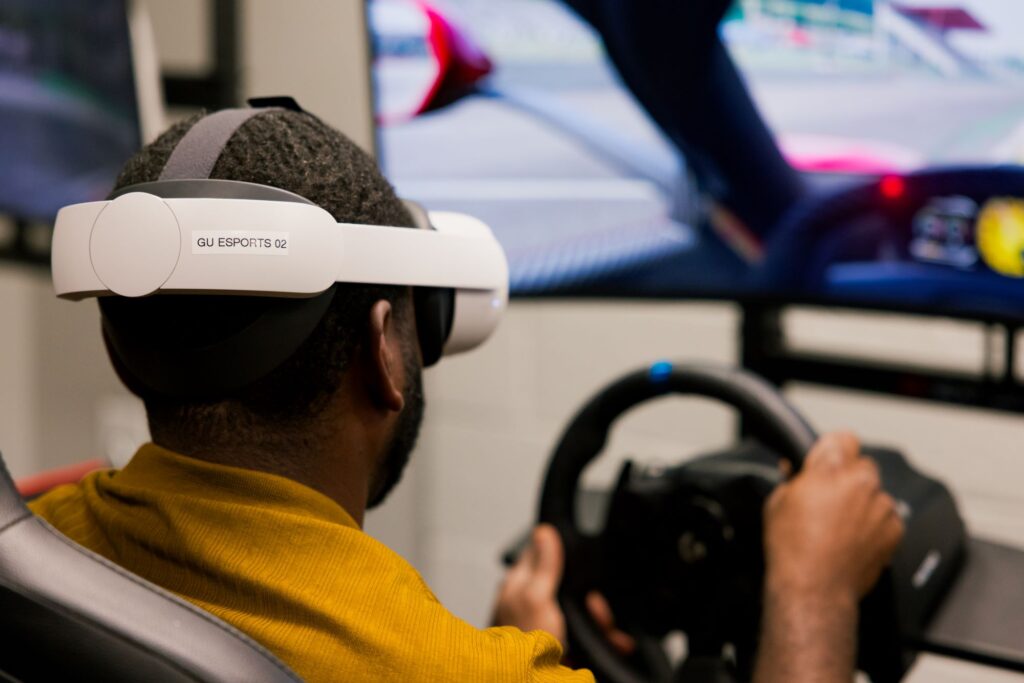
A Beginner’s Guide to Esports: Navigating the Realm of Competitive Gaming
The future of esports is undeniably intertwined with the evolution of virtual and augmented reality technologies.
As these technologies continue to advance, esports will become more immersive, interactive, and socially engaging than ever before.
Whether you are a dedicated player, a passionate spectator, or someone curious about the world of esports, the integration of VR and AR will undoubtedly shape the future of competitive gaming.
In this blog post, we will explore the future of esports and delve into the exciting possibilities that VR and AR bring to the table.
Enhanced Immersion through Virtual Reality:
Virtual Reality has the potential to revolutionize the way we experience esports.
Imagine stepping into a virtual arena where you are not just a spectator, but an active participant in the game.
VR headsets provide players with a truly immersive experience, allowing them to interact with the game environment in ways that were previously unimaginable.
Furthermore, VR technology enables esports enthusiasts to compete in virtual tournaments from the comfort of their homes.
Players can hone their skills in realistic virtual environments, enhancing their gameplay and strategy.
As VR hardware becomes more accessible and affordable, we can expect a surge in VR-based esports competitions, bringing players from different corners of the globe together in a shared virtual space.
Augmented Reality: Blurring the Lines Between Reality and the Game:
Augmented Reality overlays digital elements onto the real world, creating a seamless blend of virtual and physical environments.
In the context of esports, AR opens up exciting possibilities for both players and spectators.
Imagine watching a live esports match where game-related statistics, player profiles, and other interactive elements are displayed in real-time on your AR-enabled devices.
Spectators can visualize complex game strategies, enhancing their understanding and enjoyment of the game.
Heads-up displays integrated into AR glasses can offer real-time data analytics, allowing players to make split-second decisions based on comprehensive game statistics.
This competitive advantage can elevate the level of gameplay, leading to more intense and strategic esports competitions.
Social Interaction and Community Building:
Both VR and AR technologies offer unique opportunities for social interaction within the esports community.
In VR, players can socialize in virtual spaces, forming teams, practicing together, and strategizing in lifelike environments.
AR, on the other hand, facilitates local meetups where players can compete in augmented reality games in real-world locations.
Additionally, AR-powered mobile apps can create location-based gaming experiences, encouraging players to explore their surroundings while engaging in esports-related activities.
These interactions foster a sense of community, bringing gamers together in innovative and interactive ways.
The Rise Of New Esports Titles
With the advent of VR and AR technologies, we can expect the emergence of new esports titles specifically designed to leverage the unique capabilities of these platforms.
Game developers are already exploring innovative gameplay mechanics that take full advantage of VR and AR features, creating experiences that are not possible in traditional gaming environments.
These new titles will not only attract existing esports enthusiasts but also introduce a new generation of players to the world of competitive gaming.
As a result, the esports industry is poised for significant growth, diversifying the gaming landscape and offering fresh opportunities for players, teams, and sponsors alike.

